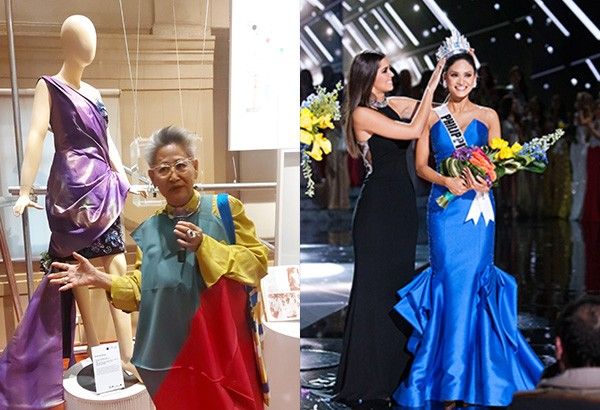Women’s Month: Women who shaped Philippine fashion in the last 50 years
MANILA, Philippines — In celebration of its 50th anniversary, the Design Center of the Philippines opened “Art x Design: A Special Reception of the 50 Years of Philippine Design and Beyond” exhibition in National Museum of Fine Arts last week. Among those included in the exhibit are works by some of the country’s top fashion […]


MANILA, Philippines — In celebration of its 50th anniversary, the Design Center of the Philippines opened “Art x Design: A Special Reception of the 50 Years of Philippine Design and Beyond” exhibition in National Museum of Fine Arts last week.
Among those included in the exhibit are works by some of the country’s top fashion designers identified by exhibit curator Marian Pastor Roces as among the high points in Philippine design in the past 50 years.
Here are some of the women who helped shape Philippine fashion, as can be seen in the exhibit that is on-view for free until April:
Salvacion Lim Higgins or Slim
Apart from being a National Artist for Fashion, the famous post-war fashion designer “was the transition between previous decades and the ‘70s. Because she moved from the ‘50s, ‘60s to ‘70s. So she was like the segue,” Roces explained to Philstar.com and other press who toured the exhibit at the opening.
“During the Second World War, many was devastated in the Philippines that even the very rich had to work. So it had women joining the workforce. So if we had women joining the workforce, we really did not have time for Baro’t Saya. Wala ka nang oras para d’un at wala ka ring maid… You were a woman who was going to work at daytime and then going to cocktails at night, you need to dress up fast. You need a dress that is efficient and you can put on by yourself and you need a couturiere who can co-create your projection for you,” Roces narrated.
“Meaning to say, Salvacion Lim Higgins was not dressing a mannequin. She was dressing a woman who has a personality, who was working, and had a tremendous amount of personal power, because you can’t really war it without having a personality.”
According to Roces, they began their exhibit with a purple number from Slim’s archives because the dress speaks not only of Salvacion Lim Higgins, but also the woman she was dressing.
“She (Slim) did not necessarily just design. She was co-designing with the woman who was going to wear (the clothes), so what’s projected is the wearer’s personality,” Roces expounded.
This, said Roces, was “a very big departure” from the previous decade wherein the woman was being dressed by the designer.
Apart from Slim, other Filipina fashion designers represented at the exhibit include Patis Tesoro (for her quirky embroidery) and Lulu Tan-Gan (for her expansive use of Philippine pineapple cloth or piña).
Kilus Foundation women

Some works by Kilus Foundation on display at the exhibit
Philstar.com/Deni Rose M. Afinidad-Bernardo
According to Roces, Kilus Foundation and its women workforce from the urban poor of Metro Manila were among the first ones, if not the first ones, to commercialize bags made of recycled strips of foil pouches or “doy packs,” thus starting environmental practices in design and the emergence of community-driven enterprises.
Fino Leatherwear
The Filipinos were not really known for leather craftsmanship. But after training with Italian leather makers, the Filipino Fino Leatherwear brand has been able to elevate women’s handbag defined by elegant color, fine leather and stunning form.
Fino was created by self-confessed leather lover, Rose Anne Bautista.
Aranaz

Aranaz camel bag made in collaboration with Kate Spade
Philstar.com/Deni Rose M. Afinidad-Bernardo
From transforming Filipiniana bags into modern, stylish arm candies women can bring everywhere, designer Amina Aranaz-Alunan and her namesake Aranaz bags had made collaborations with high-profile designers like Kate Spade – while still injecting Filipino qualities of being fun or having joie de vivre.
Pia Wurtzbach
Although not a designer, Pia made a big contribution to Philippine fashion, said Roces, for wearing Filipino designer Albert Andrada’s creation to the Miss Universe finals.
Prior to Pia, the Philippines’ Miss Universe representatives were only allowed to wear clothes by Colombian designers because Binibining Pilipinas Charities Inc. President Stella Marquez-Araneta, then the owner of the local Miss Universe franchise, is a Colombian who obtained her Filipino citizenship via naturalization.
Pia’s win marked the beginning of Filipino Miss Universe contestants wearing Filipino designs. — Video by Deni Rose M. Afinidad-Bernardo














